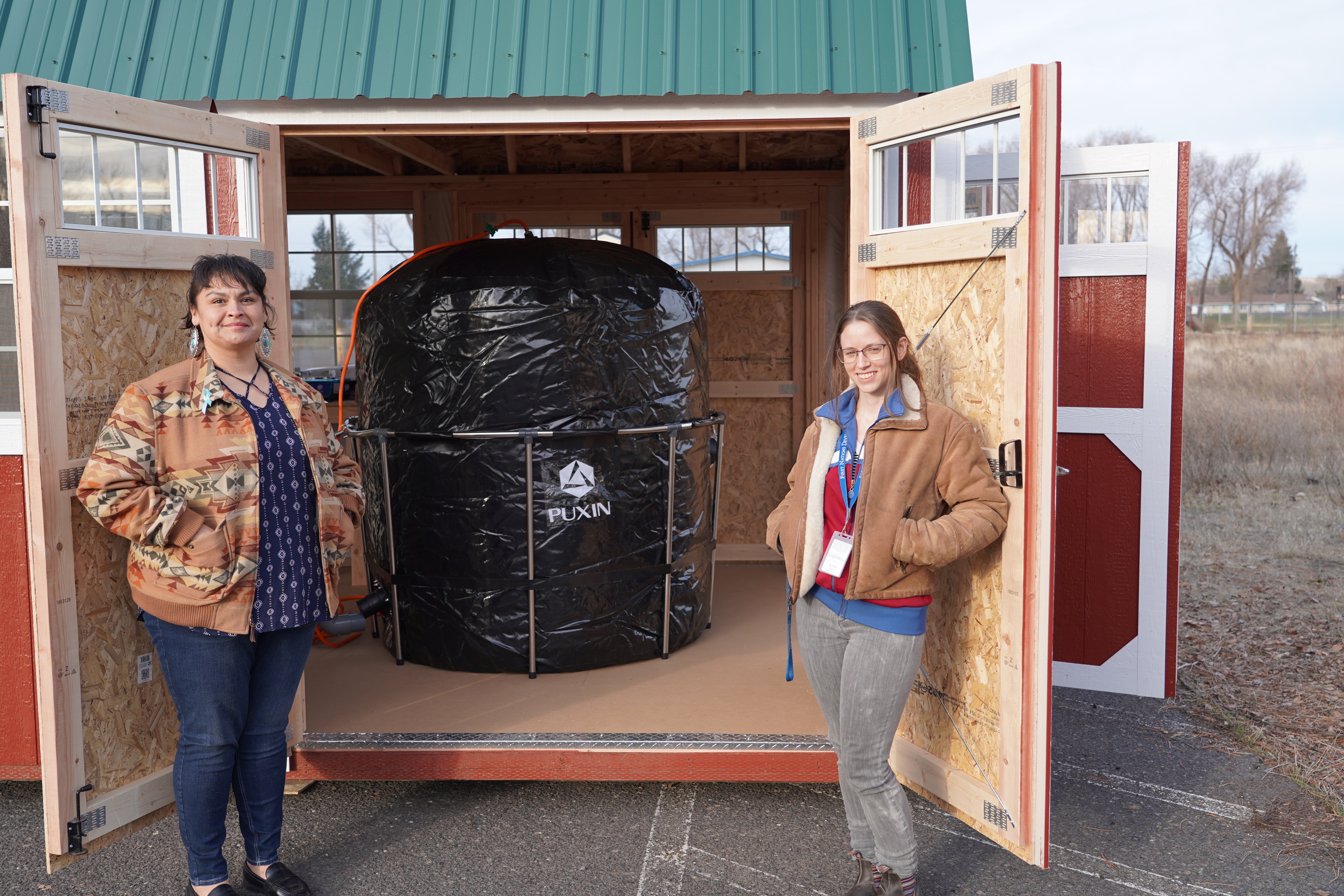
Áq̓paš Research & Demonstration
First Foods Policy Program and Biowaste Technology are excited to implement the main feature of our project, the Áq̓paš ("stomach" pronounced "ak-paash"), an anaerobic digester located at the Nixyaawii Longhouse. Details will be coming soon about this feature, so please look out for those.
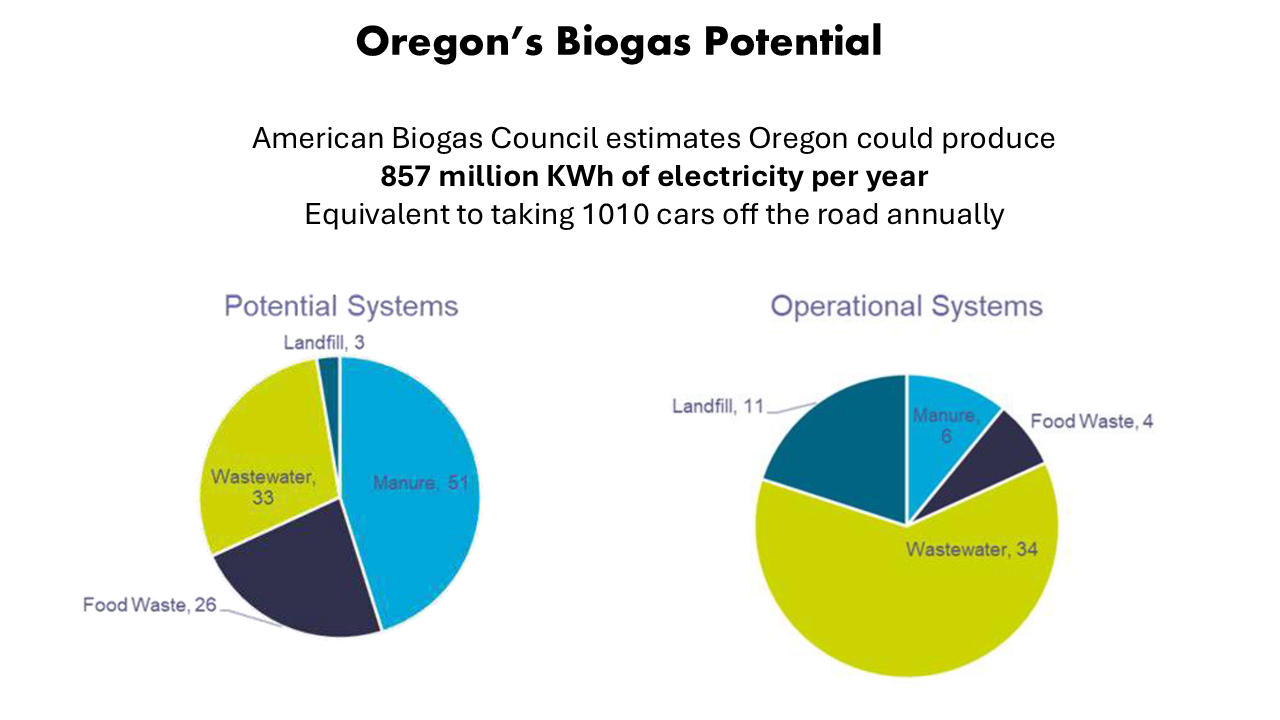
Managing the Áq̓paš
As of March 5th, the Áq̓paš is up and running, thanks for your patience and coordinating with us! Because it relies on living bacteria, anaerobic digestion is a temperature-dependent process, meaning that it goes slower in cold temperatures and faster in warm temperatures. As we get the Áq̓paš set up in its home and ready to go, we are keeping track of temperatures as it warm up enough for the digestion process to be efficient. If you want to volunteer with the project, contact us at FirstFoods@CTUIR.org or (541) 429 – 7247.
We look forward providing data on the Áq̓paš for community understanding, thanks for your curiousity about our efforts!
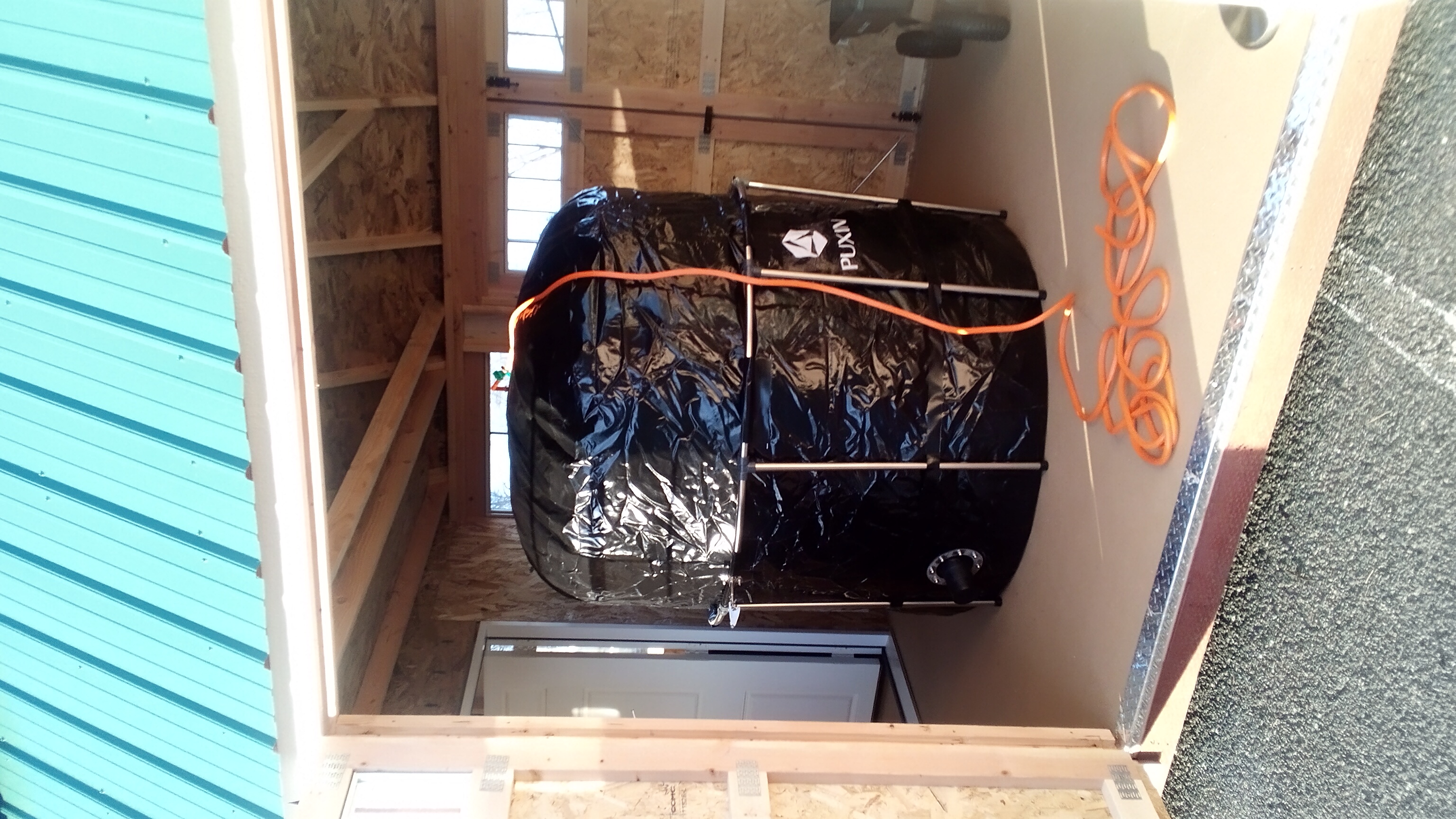
The Áq̓paš is inflated to show what it will look like when it is full of food waste being digested, though it currently does not have food waste in it while the temperatures in winter are too low to support bacteria health.
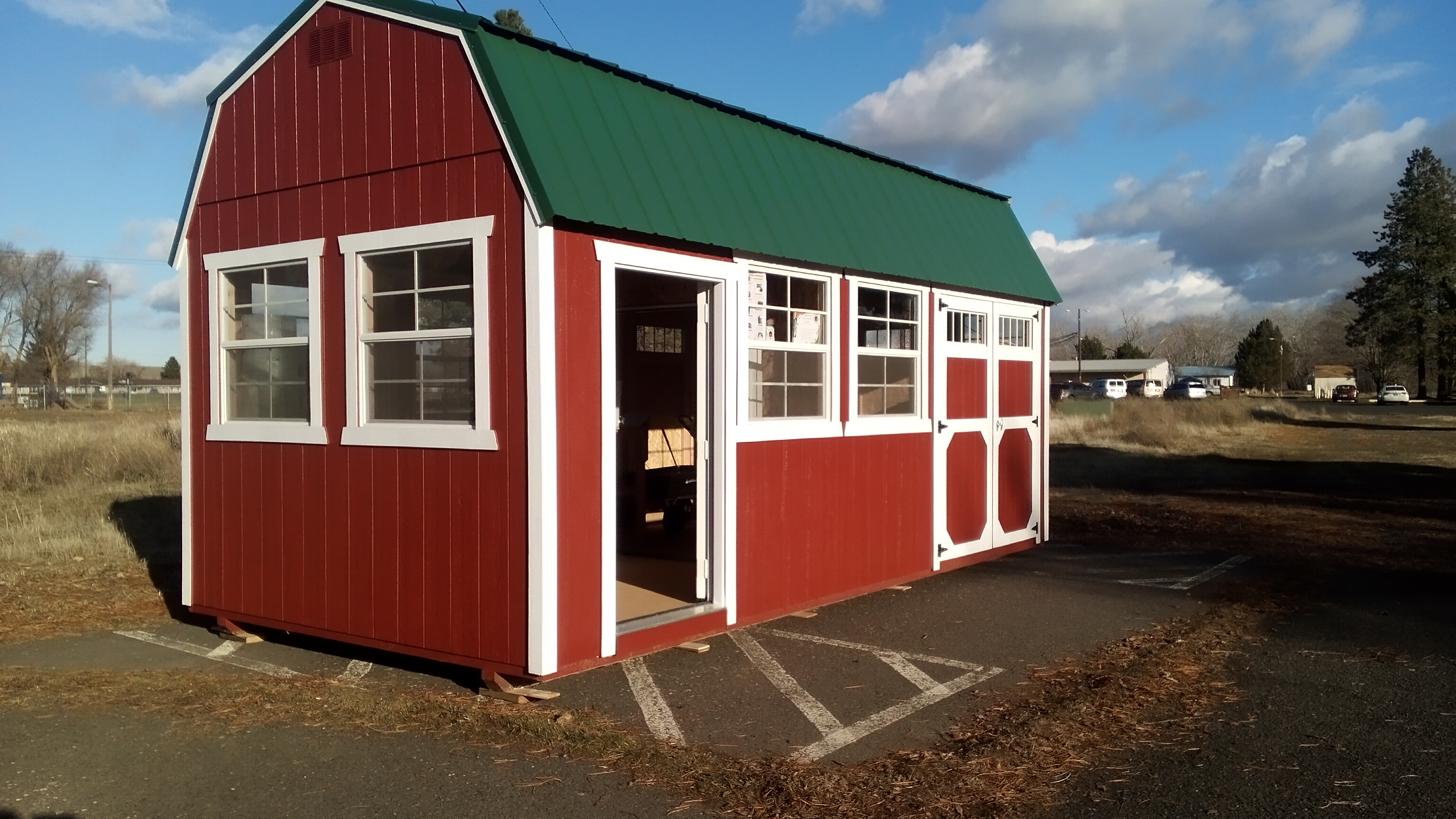
The Nixyaawii, Don’t Throw It Away! Project (NDTIA!P) building will house the Áq̓paš and be the primary location where food waste from Longhouse events and the Nixyaawii community will be collected (Jan 2025).
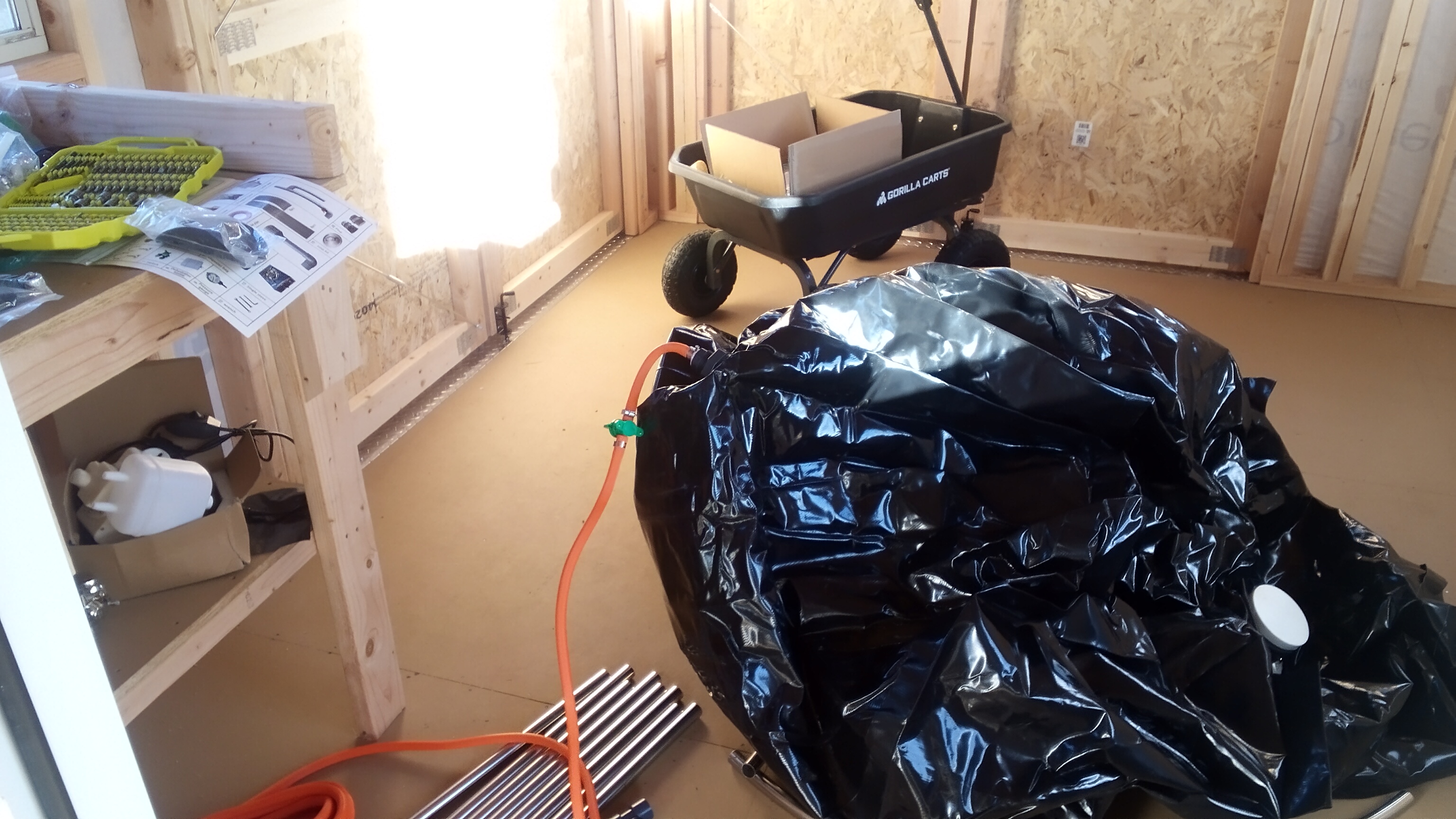
Early in the set up process, the basic form of the Áq̓paš is easy to see. Anaerobic digestion happens in a sealed environment, inside this large plastic bag held up by metal support scaffolding, seen here (Jan 2025).
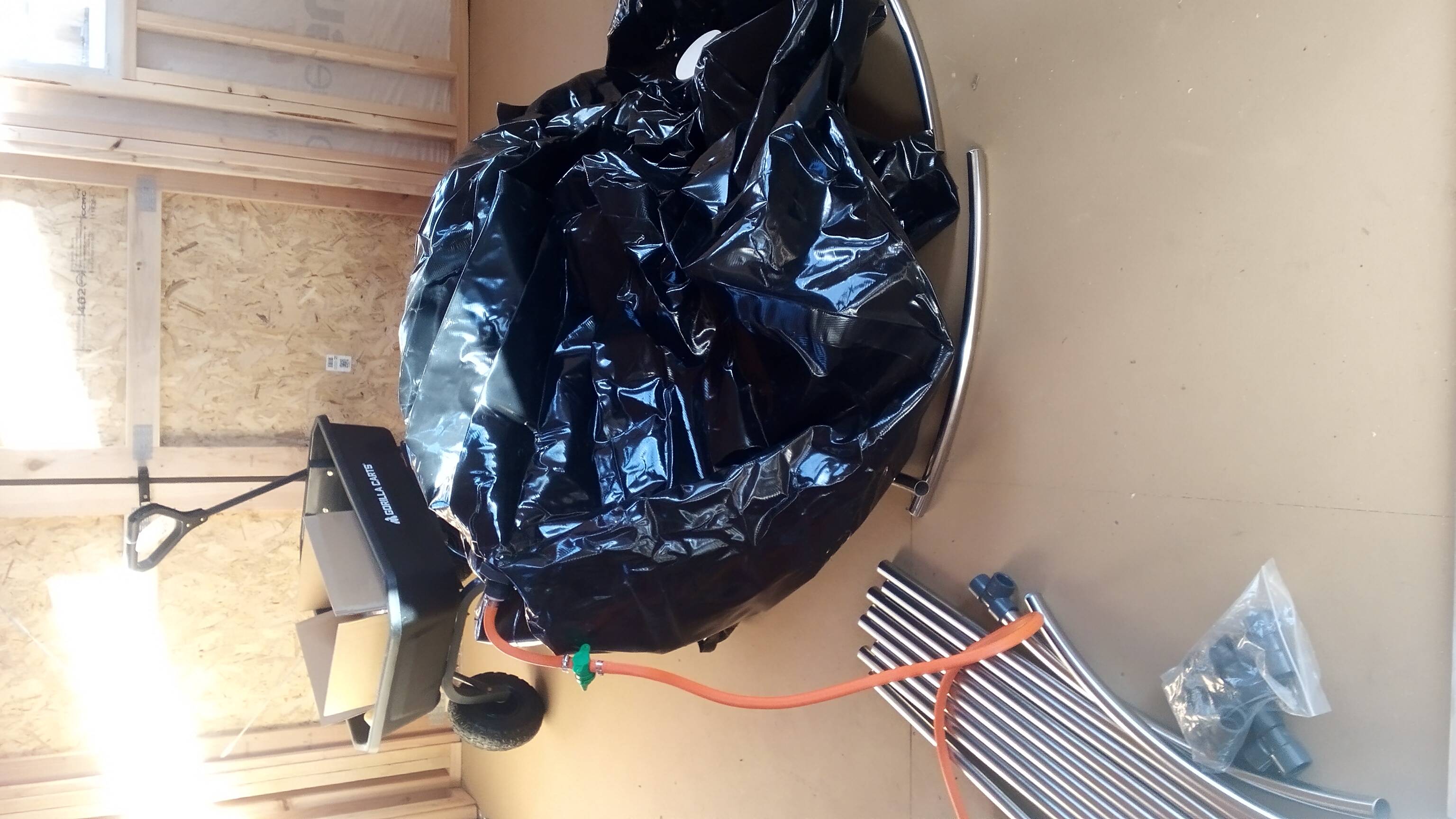
Early in the set up process, the basic form of the Áq̓paš is easy to see. This is a pilot Áq̓paš that will pave the way for another version later this spring.
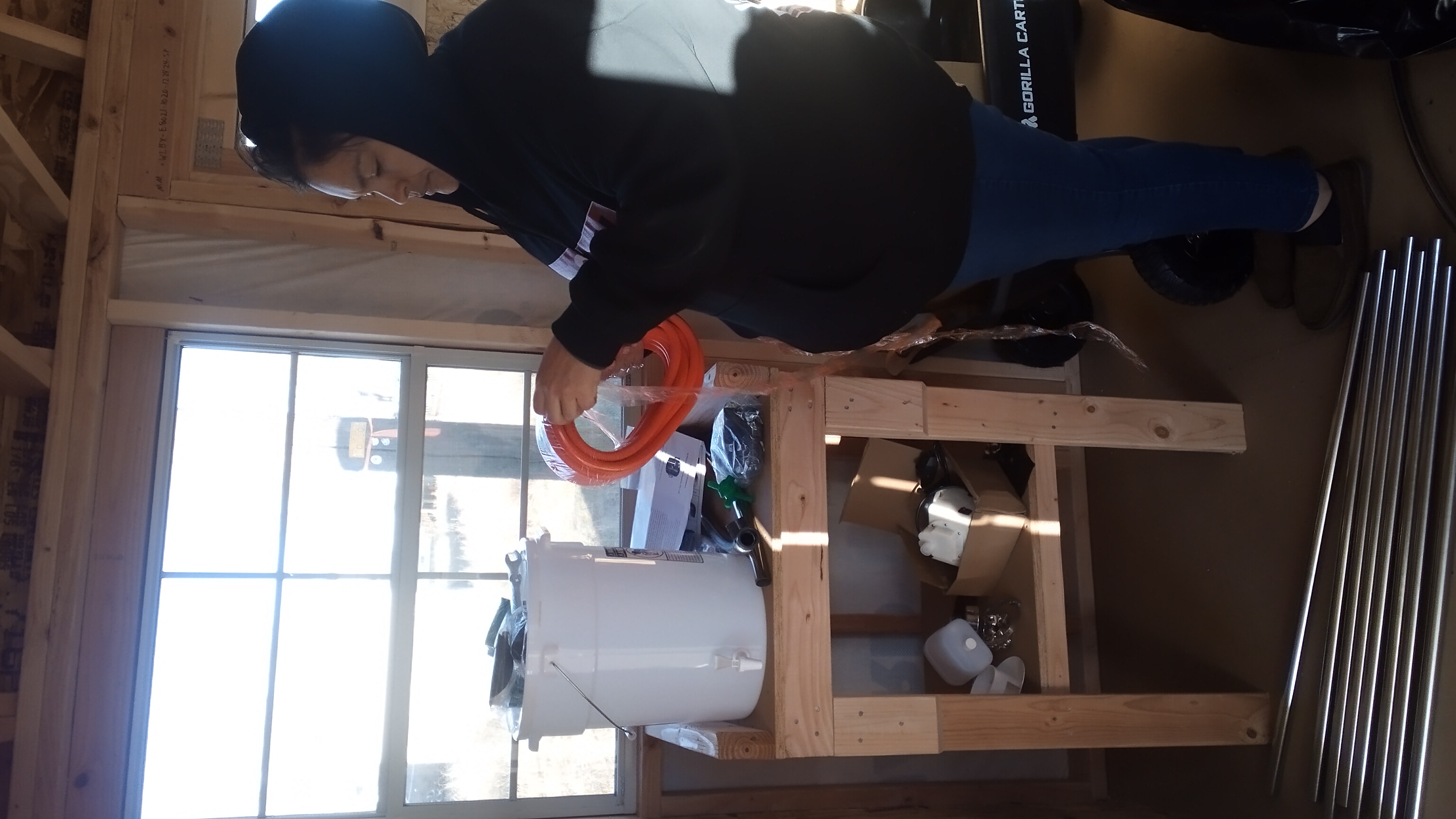
DeArcie Abraham of Biowaste Technology begins putting together the pilot Áq̓paš that will pave the way for another version later this spring. Thank you to Biowaste Technology and funder Amazon Change X Grant for their contribution to the project! (Jan 2025)
Methane is created when formerly living material (organic matter) decomposes in an environment without oxygen. If released into the atmosphere, methane can contribute greatly to greenhouse gases, causing an increase in global heating. If methane is combused, it creates carbon dioxide instead, and can produce energy in the form of renewable natural gas. This demonstration is designed to provide CTUIR an opportunity to research the potential for methane energy to be a part of our community's energy resilience.
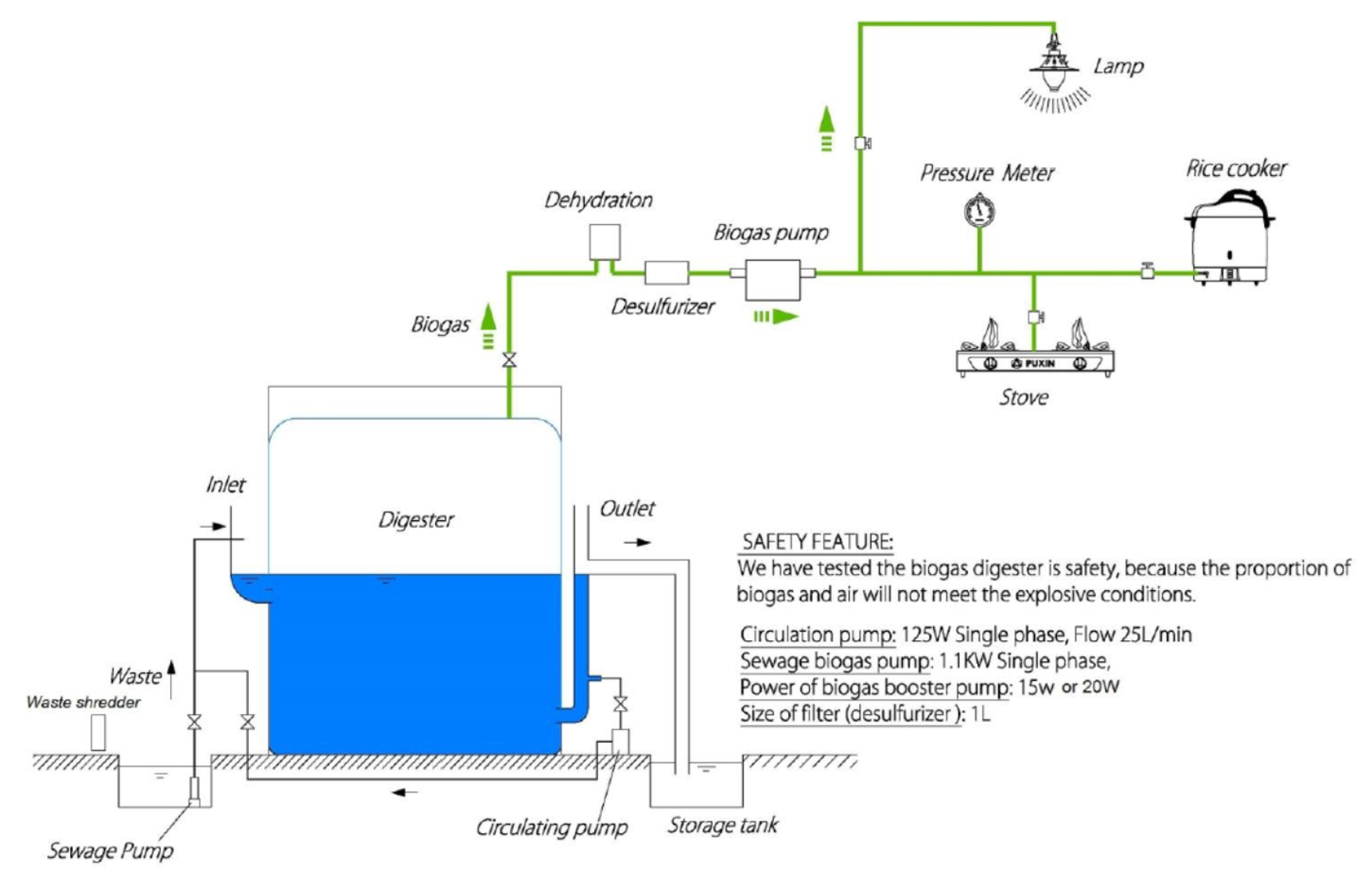
This cross section diagram shows how the Áq̓paš turns organic waste into energy and a liquid fertilizer, and what steps this design takes to reduce any harmful gases that may be produced during combustion. Image courtesy of Shenzen Puxin Technology Company LTD.
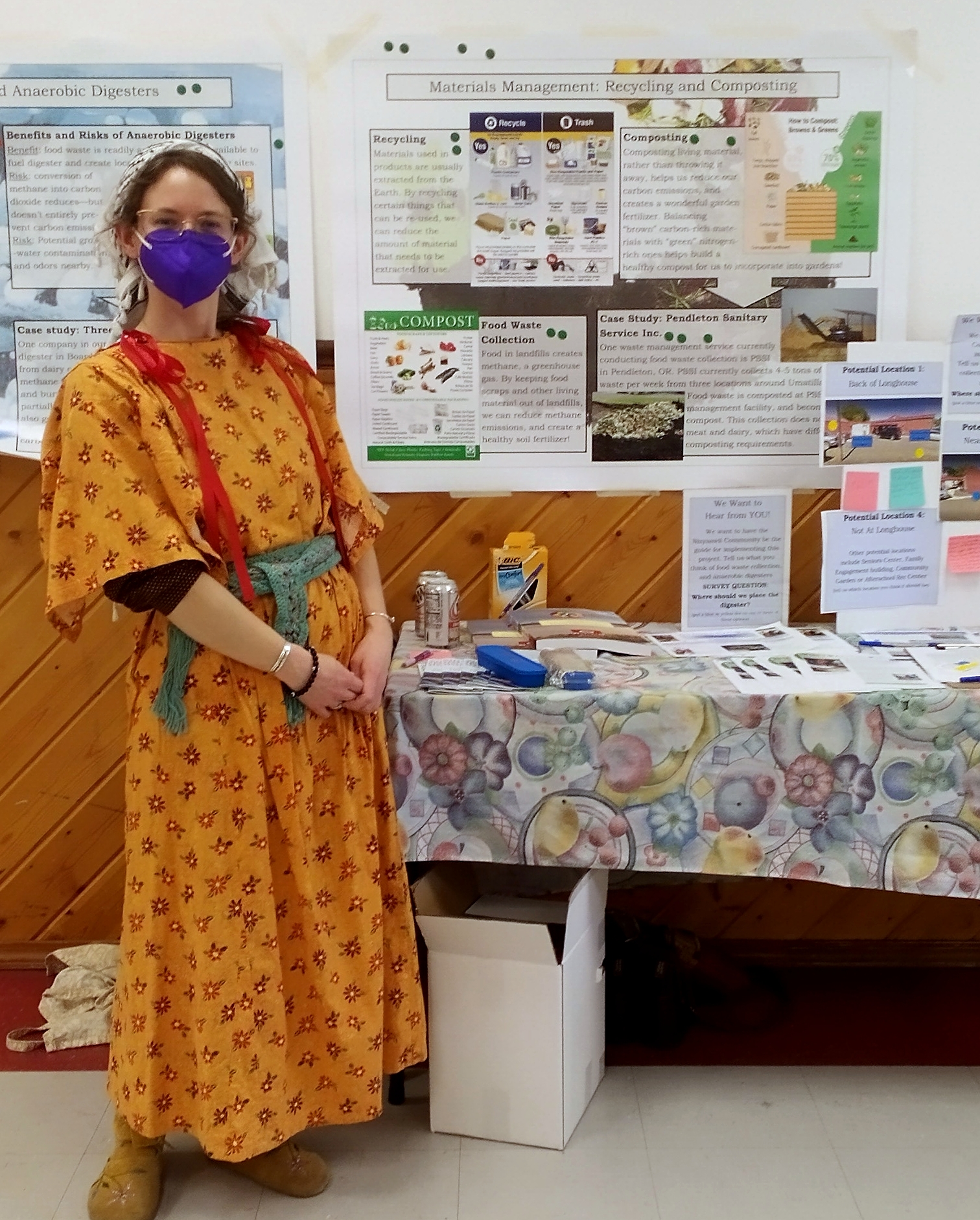
FFPP staff Colleen Sanders asks Celery Feast attendees to express their opinion on a potential location at the Longhouse to site the bio digester in Feb 2024.
Community consent and meaningful participation in planning has been an intentional aspect of this project. Prior to any decisions or actions taken in implementing Áq̓paš, First Foods Policy Program went to great lengths to facilitate community direction of the project.
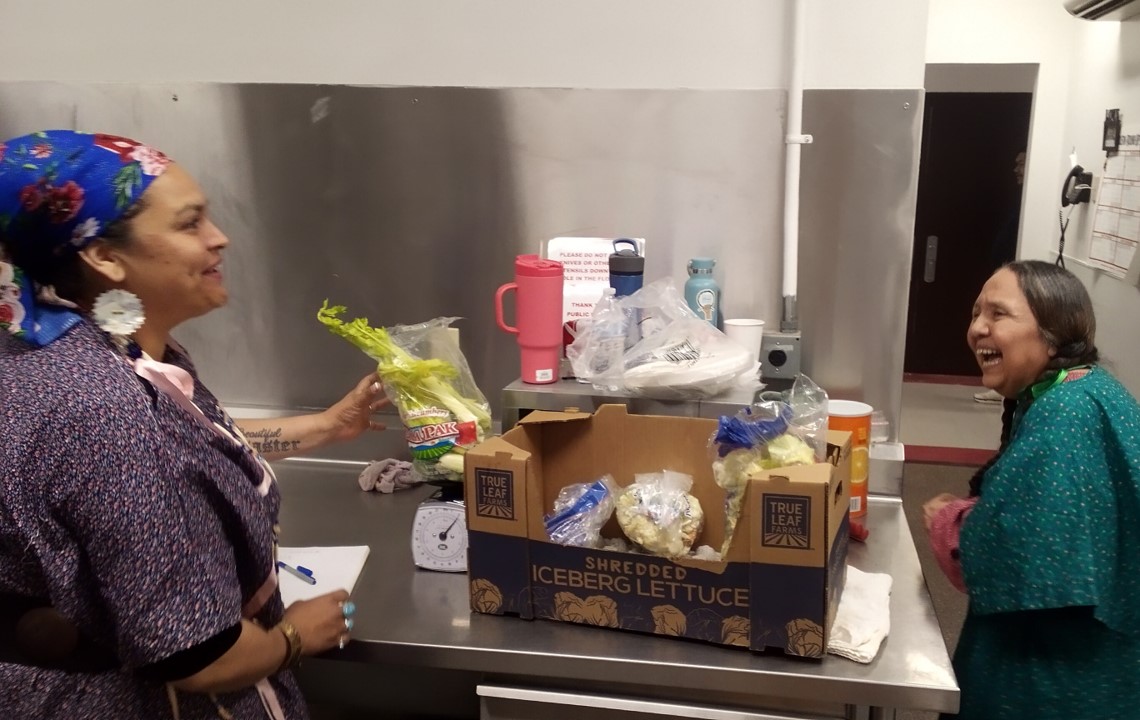
DeArcie Abraham with Biowaste Technology laughs with a Root Feast attendee as she weighs food waste diverted from the Feast’s prep kitchen (April 2024). Once the bio digester is installed, this food waste will be an input into the digester.
Carbon Calculations
When food waste decomposes without oxygen, it creates gaseous methane. If food is thrown into a landfill, it creates methane that can escape into the atmosphere and contribute to the climate crisis. When food waste is deposited into the bio digester it also breaks down to release methane, but this is trapped by the bio digester and syphoned into storage vessels and used as a direct use fuel, similar to butane. While carbon dioxide is emitted through combustion, a worse greenhouse gas is avoided by capturing the methane, and creates a bio fuel that can be balanced with the need for reliable renewable energy for Tribal communities.
Connection to EPA CPRG outreach with ODEQ
Initial community engagement for our food waste project was conducted concurrently with listening sessions in partnership with the Oregon Dept of Environmental Quality (ODEQ). These listening sessions were hosted by CTUIR in support of ODEQ’s Priority Climate Action Plan development, as part of the EPA’s Climate Pollution Reduction Grant (CPRG). In these two listening sessions, held on Oct 5th and 6th, participants were asked to learn about existing carbon capture and removal options that are currently being implemented in our area, and indicate positive or negative perceptions of each. Posters for these different strategies were on display and participants were asked to place red or green sticky dots by concepts they either had concerns about or were in favor of, respectively. Two of these carbon management strategies were materials management and anaerobic digestion, both of which were received positively by event participants.
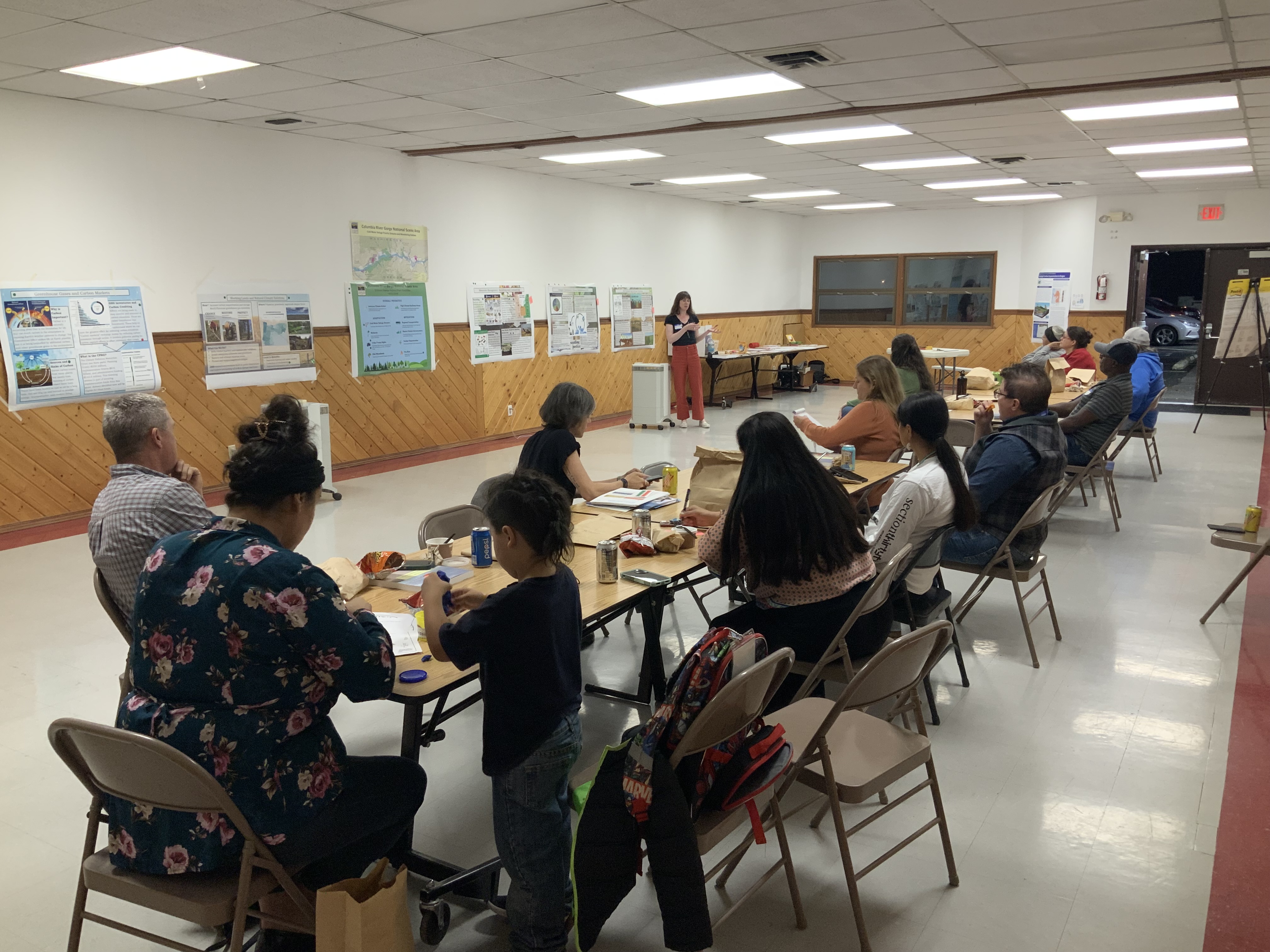
Participants in the CTUIR Priority Climate Action Plan (PCAP) listening sessions at the Nixyaawii Longhouse sit at tables as they listen to “lightning round” short presentations by speakers about specific carbon management strategies occurring regionally (Oct 2023).
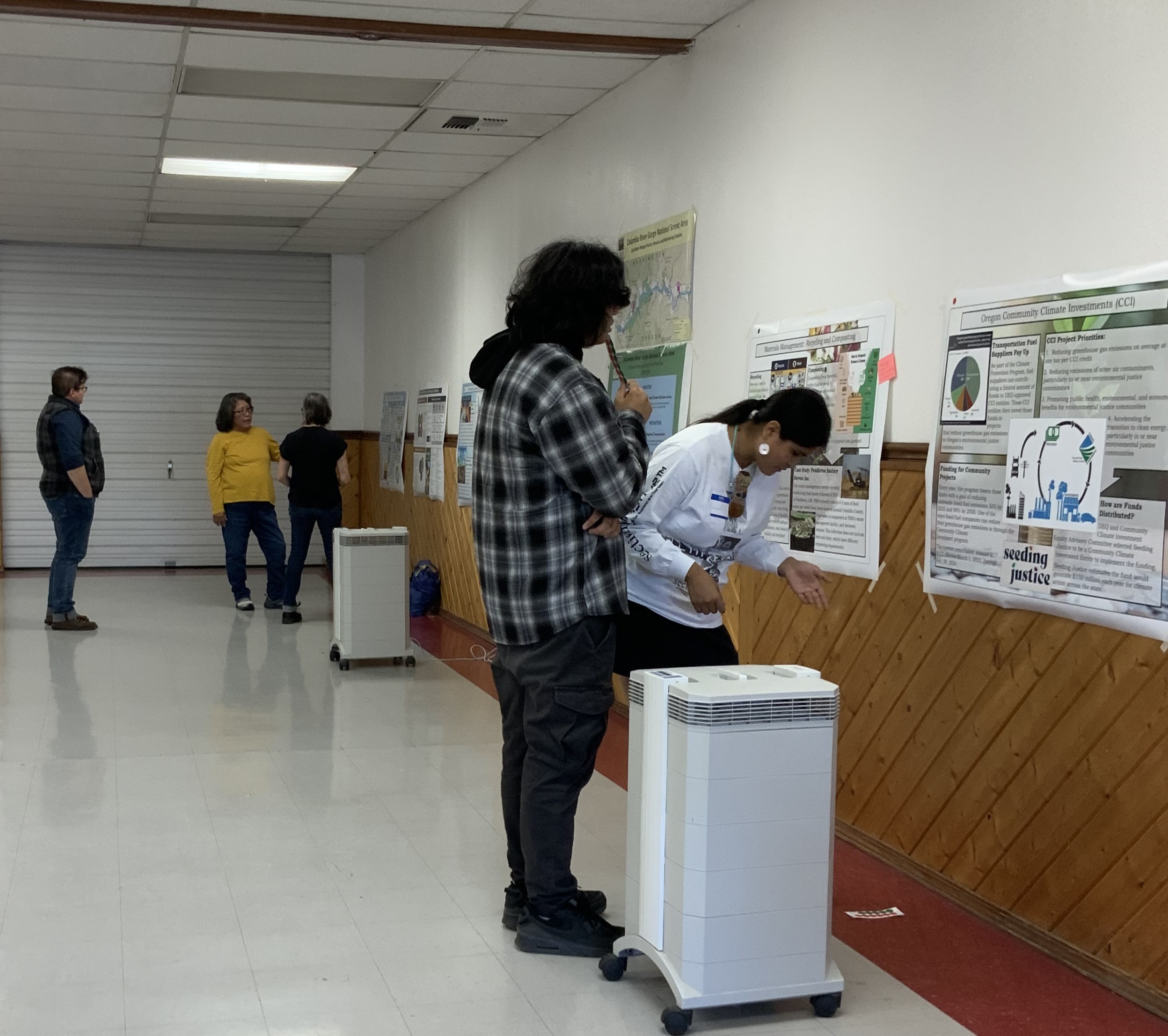
Tribal youth consider educational posters about carbon management options happening regionally, placing sticky dots to indicate their thoughts on strategies they would like to see more or fewer of in the near future (Oct 2023).
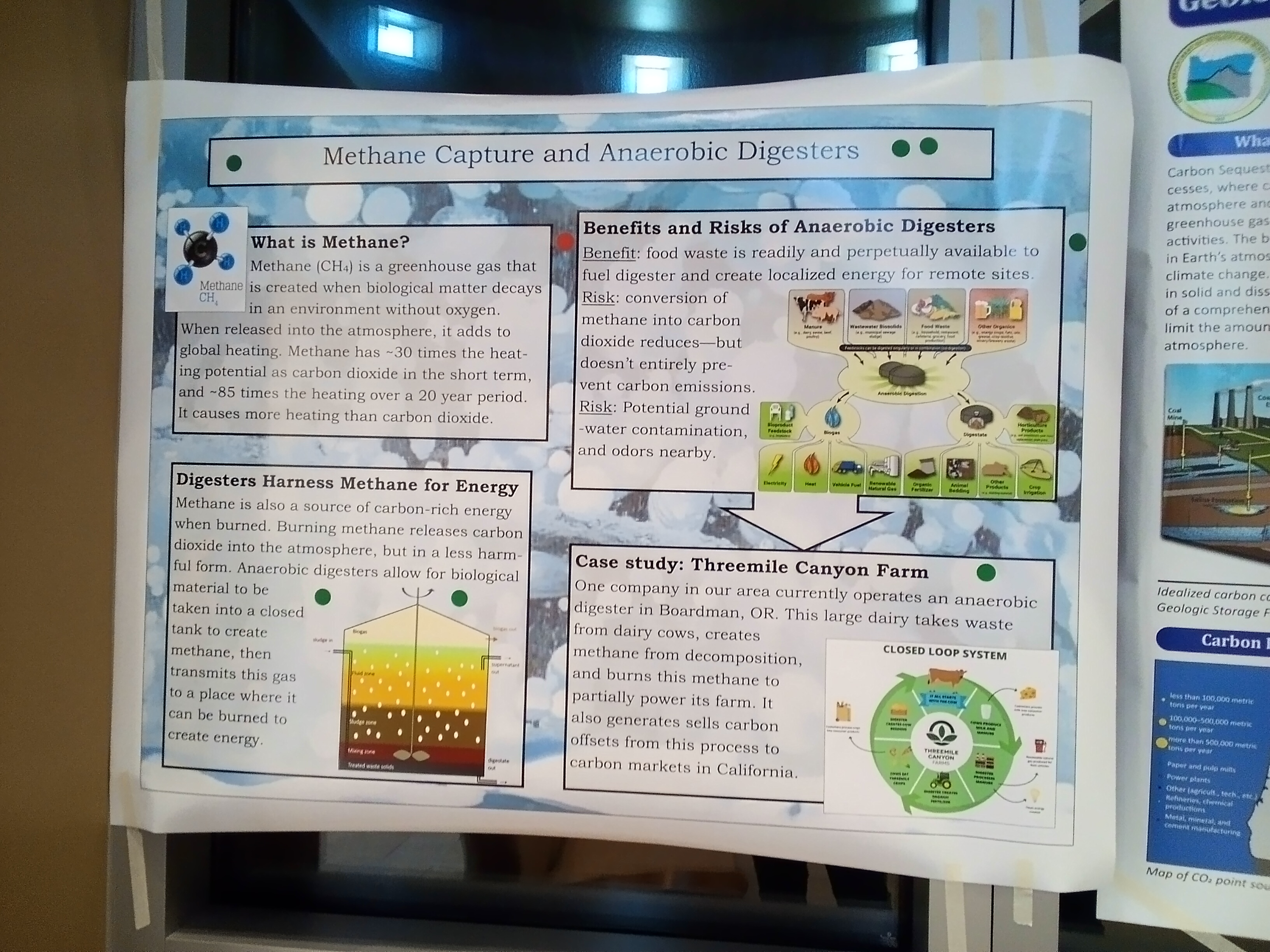
An educational poster is taped to a wall at the Nixyaawii Governance Center displaying information about methane capture and anaerobic digestion. Green dots placed around the poster indicate participants’ interest in the concept, and one red dot indicates some concerns a participant has (Oct 2023).
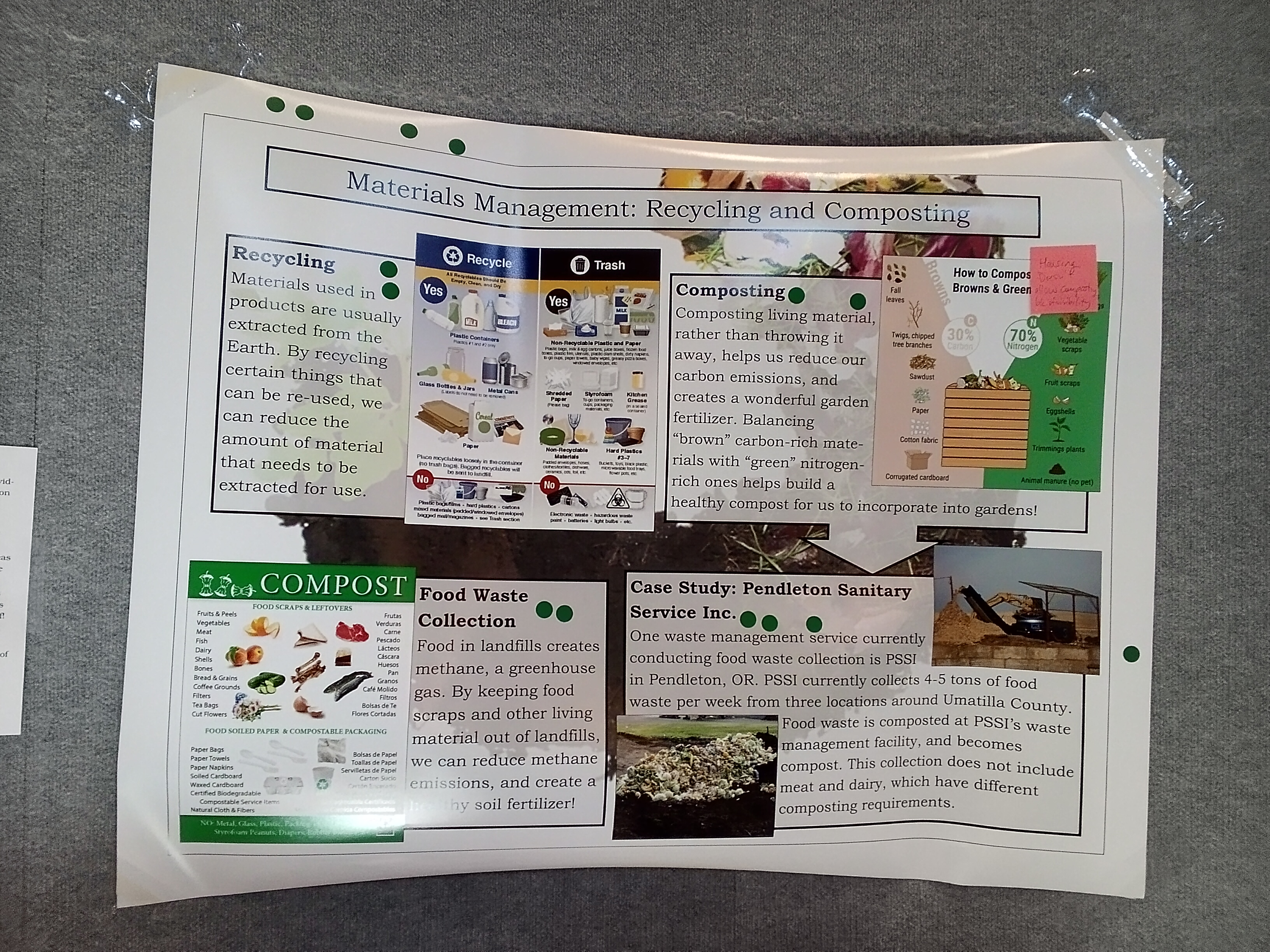
An educational poster at the Nixyaawii Governance Center displaying information about materials management like recycling and composting. Green dots placed around the poster indicate participants’ interest in the concept, which was completely unanimous (Oct 2023)
This material is based upon work supported by the U.S. Department of Agriculture, under agreement number 2024-70510-41990.
Any opinions, findings, conclusions, or recommendations expressed in this publication are those of the author(s) and do not necessarily reflect the views of the U.S. Department of Agriculture. In addition, any reference to specific brands or types of products or services does not constitute or imply an endorsement by the U.S. Department of Agriculture for those products or services.
USDA is an equal opportunity provider, employer, and lender.
Webpage updated: March 11 2025

